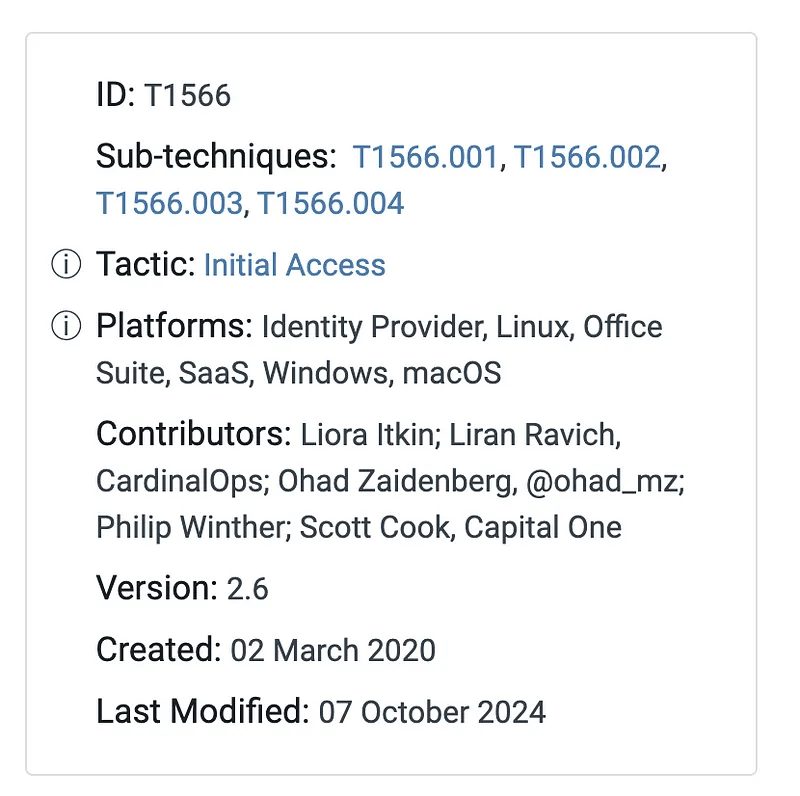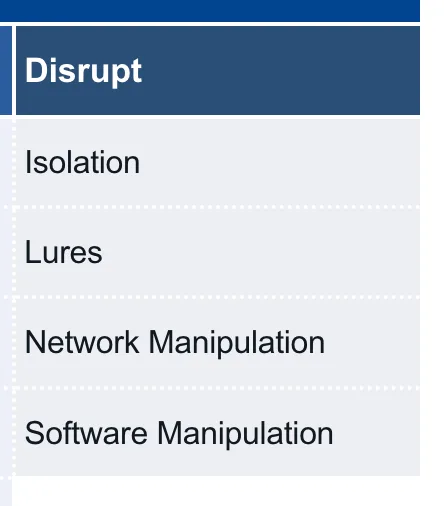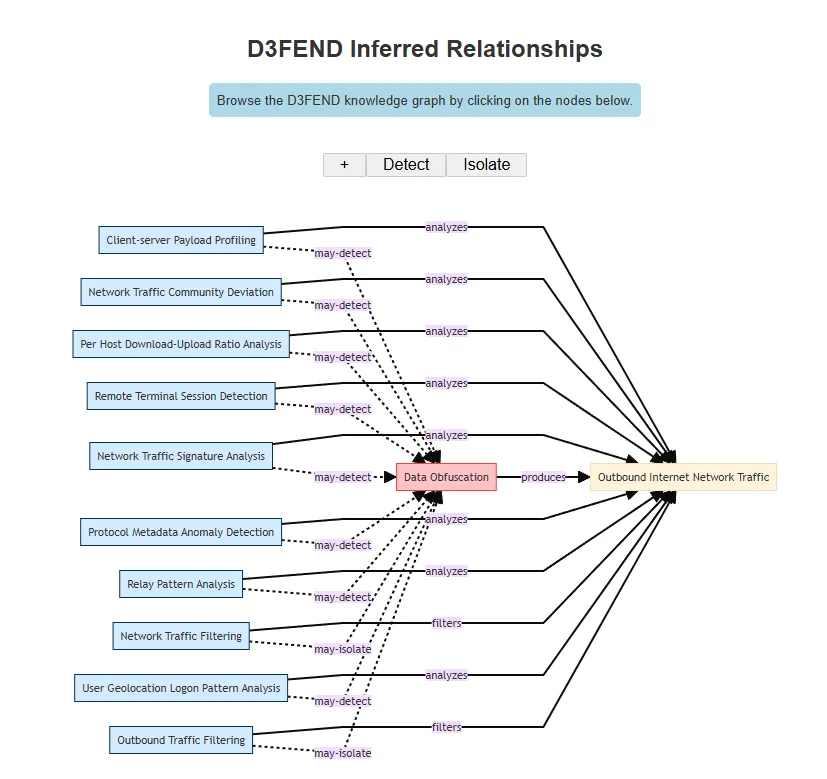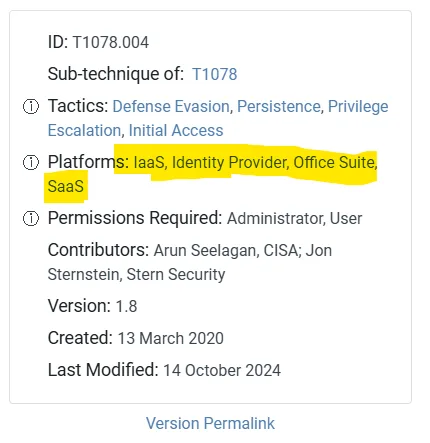Case Study: MITRE Frameworks — ATT&CK, CAR, ENGAGE & D3FEND
In this case study, I wanted to dive deeper into the MITRE ecosystem — a suite of frameworks that form the backbone of modern cybersecurity defense and threat analysis.
I explored ATT&CK, CAR, ENGAGE, and D3FEND, learning how each contributes to understanding, detecting, and defending against adversarial behaviors.
This project also involved reviewing emulation plans and mapping real-world threat groups to cloud-based environments.
Introduction and Learning Setup
I began by setting up a local workspace for screenshots and notes, then visited the official MITRE sites for ATT&CK, CAR, ENGAGE, and D3FEND.
The goal was to understand how each framework fits into the threat lifecycle — from identifying tactics, techniques, and procedures (TTPs) to implementing defensive countermeasures.
Exploring ATT&CK — Mapping Adversarial Behavior
To start, I opened the MITRE ATT&CK website:
https://attack.mitre.org/
I searched for the Phishing technique, which is one of the most common initial access methods used by attackers.
Answer: Technique ID – T1566

From the details, I learned that MITRE categorizes this under the Initial Access tactic and lists subtechniques such as:
- Spearphishing Attachment
- Spearphishing Link
- Spearphishing via Service
Each entry also includes mitigations and detection ideas.
For Phishing (T1566), recommended mitigation: User Training (M1017).
Detection data sources: Application logs, network traffic, and file content inspection.
To visualize relationships, I launched the ATT&CK Navigator: https://mitre-attack.github.io/attack-navigator/
I loaded a public layer to see how techniques are mapped against coverage and detections.
Then, I browsed a real threat group: Axiom (G0001).

It showed associated techniques, malware families, and even overlaps with Winnti Group — demonstrating how ATT&CK can reveal campaign-level relationships.
Investigating CAR — Turning Techniques into Detections
After mapping techniques, I moved on to MITRE CAR (Cyber Analytics Repository) at: https://car.mitre.org/analytics
This repository bridges the gap between ATT&CK theory and practical detection.
I opened an analytic example: CAR-2013-05-004
The page included:
- Pseudocode for detection logic
- Platform-specific queries (Splunk, EQL, Zeek, etc.)
- Unit tests for validation
This analytic described how to detect suspicious process execution patterns — mapping directly to ATT&CK techniques.
I also discovered BZAR, a collection of Zeek scripts for network-level analytics, which helps analysts detect SMB/RPC anomalies.
This made it clear that CAR provides reusable detection building blocks that can be adapted across different SIEMs.
Understanding ENGAGE — Deception and Adversary Interaction
Next, I explored MITRE ENGAGE, which focuses on adversary engagement and deception operations. https://engage.mitre.org/
The ENGAGE matrix includes five main categories:
- Prepare
- Expose
- Affect
- Elicit
- Understand
I opened Persona Creation (SAC0002) under Prepare, which provides a Persona Profile Worksheet to help create believable decoys.

I also reviewed Lures (EAC0005) under Expose, which describes techniques for baiting adversaries to interact with deception assets.
These worksheets can be downloaded and used to design controlled engagement experiments.

This section showed how deception can actively collect adversary telemetry — a valuable method to test defenses in realistic ways.
Analyzing D3FEND — Mapping Countermeasures
After studying how attacks and detections are structured, I explored the defensive counterpart: MITRE D3FEND. https://d3fend.mitre.org/
I searched for Data Obfuscation, one of the first examples in the lookup list.
The framework displayed defensive techniques, relationships, and observable artifacts.
Answer: Observable Artifact – Outbound Internet Network Traffic

This helped me see how D3FEND maps directly to ATT&CK tactics — forming a bidirectional view of offense and defense.
It essentially provides defenders with a blueprint for mitigating ATT&CK techniques in practice.
Reviewing MITRE Emulation Plans — From Theory to Testing
To make the study practical, I accessed MITRE’s Adversary Emulation Plans library: https://attack.mitre.org/resources/adversary-emulation-plans/
I opened the APT3 emulation plan and reviewed Phase 1, which focuses on C2 setup.
I also noticed that the plan used the Sticky Keys persistence trick by replacing:
sethc.exe → cmd.exe
Then, I reviewed APT29 and Sandworm plans to identify tools and web shells:
- APT29 used Pupy, Metasploit, and PoshC2
- Sandworm referenced P.A.S. (S0598) web shell

This gave me hands-on exposure to how threat emulation plans can be used to test defensive coverage against real TTPs.
Cloud Context — Mapping ATT&CK to APT33
Finally, I conducted a focused investigation on APT33, a group known to target the aviation sector and cloud environments.
Using the ATT&CK group page: https://attack.mitre.org/groups/G0064/
Findings:
-
Operational since:
2013
-
Cloud-related technique:
T1078.004 (Valid Accounts: Cloud Accounts)
- Associated tool:
Ruler - Mitigation:
Multi-Factor Authentication (M1032) - Affected platforms:
IaaS,SaaS,Office Suite,Identity Providers
This section helped me understand how ATT&CK can guide cloud security prioritization — by showing where to focus detection and hardening efforts.
Lessons Learned and Reflections
This project tied together the full MITRE ecosystem — from adversary behaviors to defensive implementation.
Through this, I learned how to:
- Map ATT&CK techniques to CAR analytics for actionable detections.
- Use ENGAGE to design deception strategies that generate threat telemetry.
- Apply D3FEND to select practical countermeasures against specific ATT&CK techniques.
- Reference emulation plans to validate detections and train SOC teams.
- Analyze real threat groups (APT33, APT3, APT29) and connect them to modern infrastructure risks.
What stood out most was how MITRE frameworks work as a continuous feedback loop:
ATT&CK shows how attacks happen,
CAR shows how to detect them,
D3FEND shows how to stop them, and
ENGAGE shows how to learn from adversary behavior.
By the end of this exploration, I felt confident applying MITRE frameworks as a unified methodology for threat modeling, detection engineering, and red-blue collaboration.